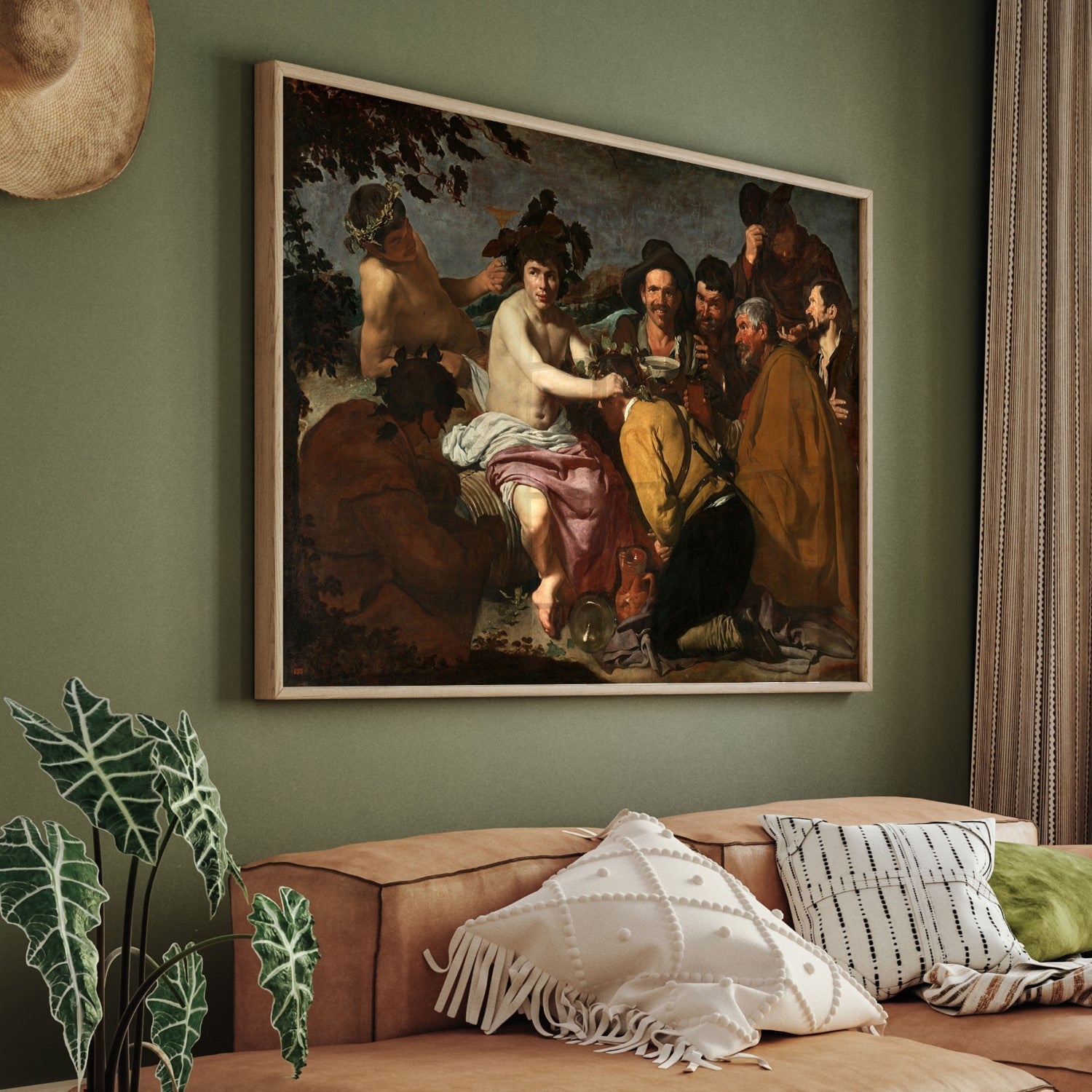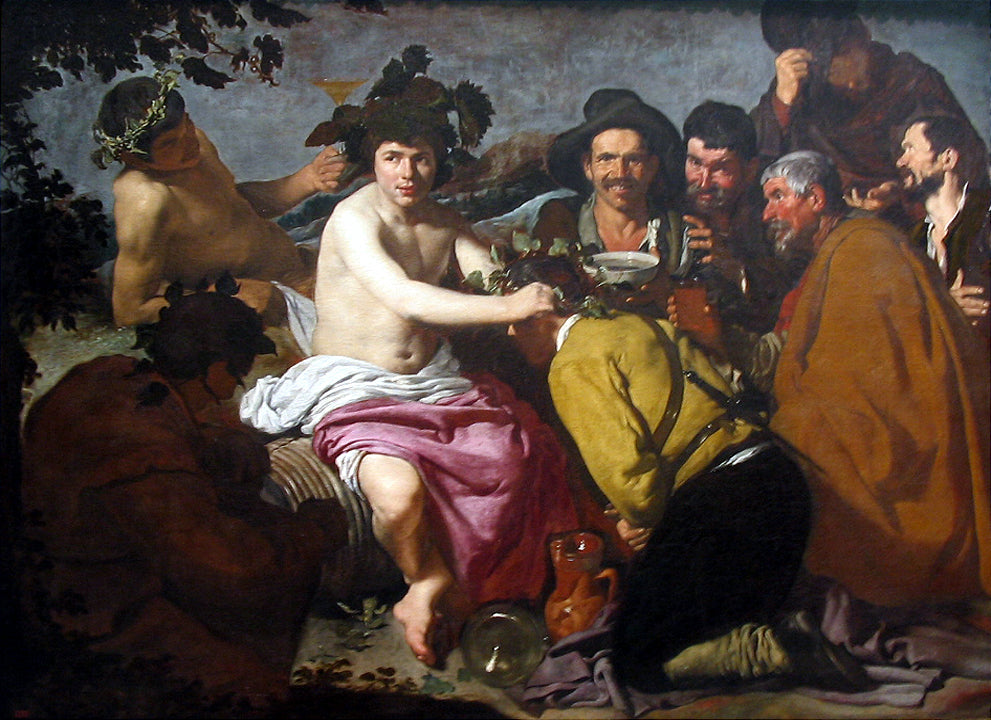Description
The Triumph of Bacchus or "Los Borrachos" is a painting created by Diego Velázquez, one of the most famous painters of the Spanish Golden Age. The work was made between 1628 and 1629 and is currently in the Museo del Prado in Madrid, Spain.
An interesting fact about this painting is that it represents a scene from Roman mythology in which the god Bacchus, god of wine and fertility, celebrates with a group of drunkards. Bacchus appears on the scene handing a laurel wreath to a young man who is sitting next to him. The other characters are rustic-looking men, representing peasants who indulge in drunkenness.
What makes this work special is that Velázquez breaks with the classical tradition of representing divinities with ideal and sublime characteristics. Instead, the painter is inclined to represent Bacchus and the human characters in a more realistic and earthy way. The faces of the characters are expressive and authentic, showing signs of fatigue, disorder and jubilation typical of a drunken party.
This more realistic and mundane depiction of the divinity and his human followers is an example of Velázquez's mastery of capturing humanity in his works, while also reflecting the naturalism and baroque realism that characterized his artistic style.
The Triumph of Bacchus is also notable for Velázquez's masterful use of chiaroscuro. This pictorial technique, which consists of using contrasts of light and shadow to give volume and depth to the composition, was popularized by Caravaggio, an influential Italian Baroque painter.
In Los Borrachos, Velázquez uses chiaroscuro to highlight the figure of Baco and accentuate the sensation of three-dimensionality in the group of people. The handling of light creates an intimate and dramatic atmosphere in the scene, which in turn emphasizes the tension between the divine and the earthly.
Likewise, Velázquez demonstrates his ability to capture different textures in painting. The details in the clothing of the characters, in the skin of the grapes and in the laurel wreath show his mastery in the representation of varied materials and surfaces.
Finally, it is worth mentioning that Los Borrachos is one of Velázquez's first masterpieces, and its success allowed him to establish himself as a court painter to King Philip IV of Spain. This painting is an early example of the artist's talent and technique, which would continue to evolve in later works such as "Las Meninas" and "La rendición de Breda".






